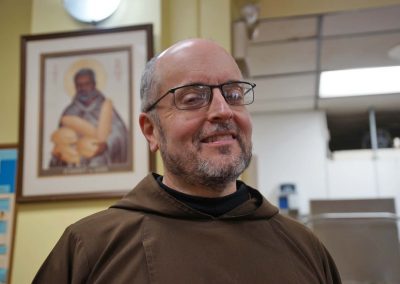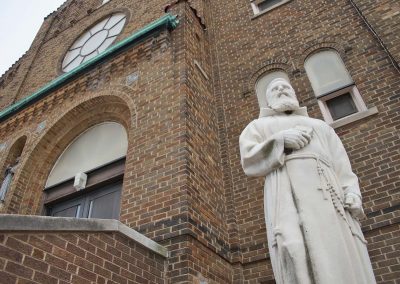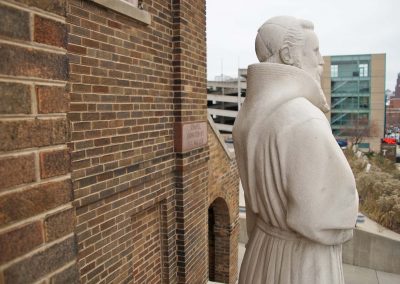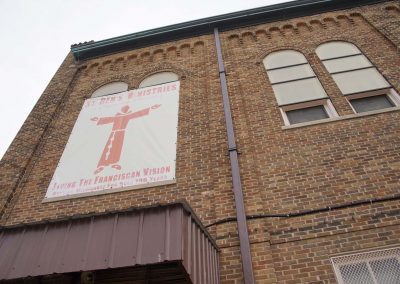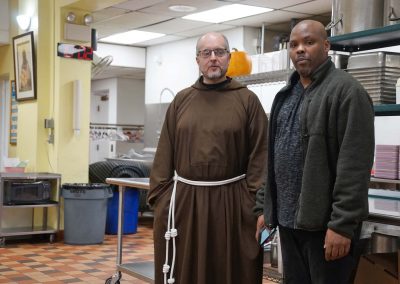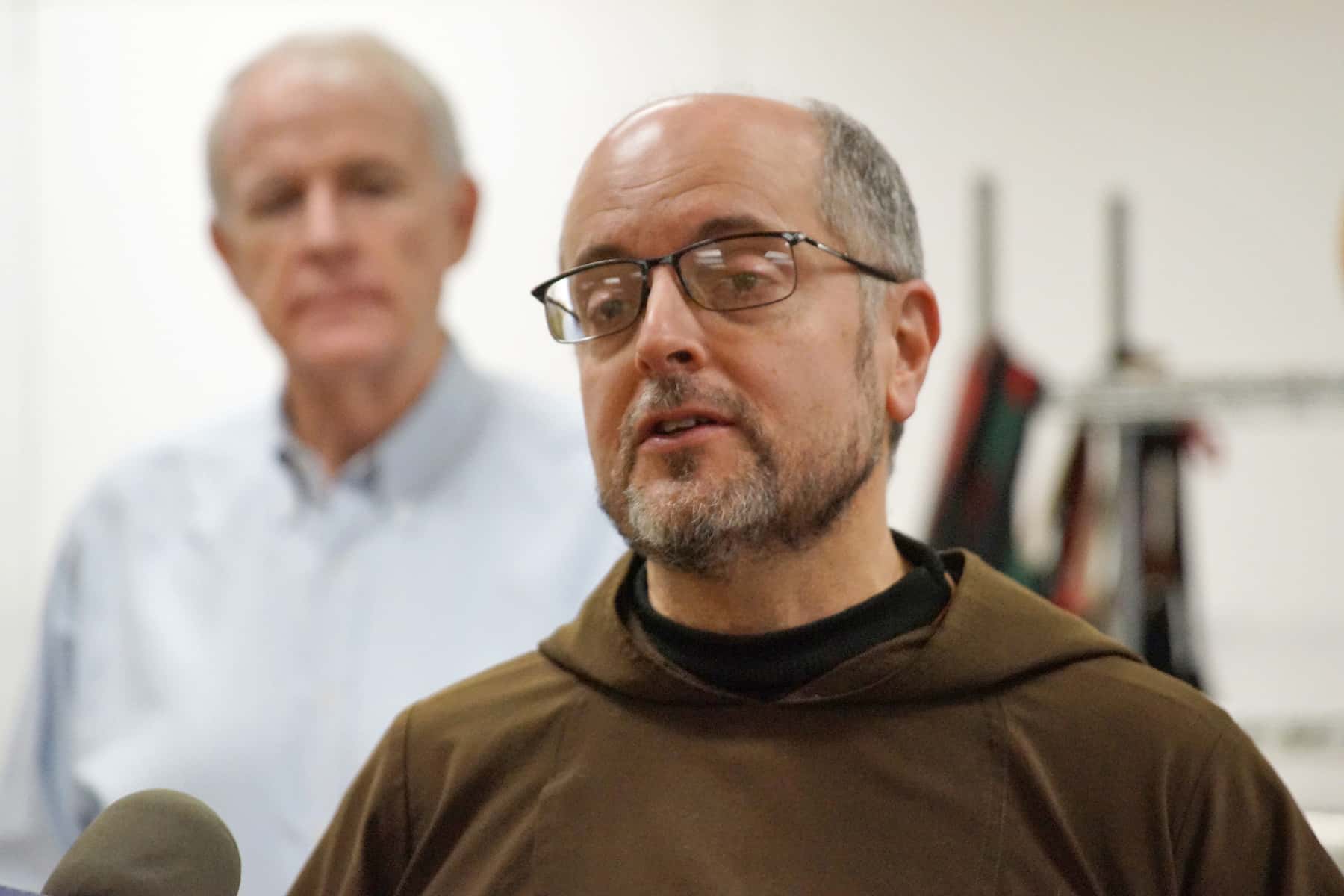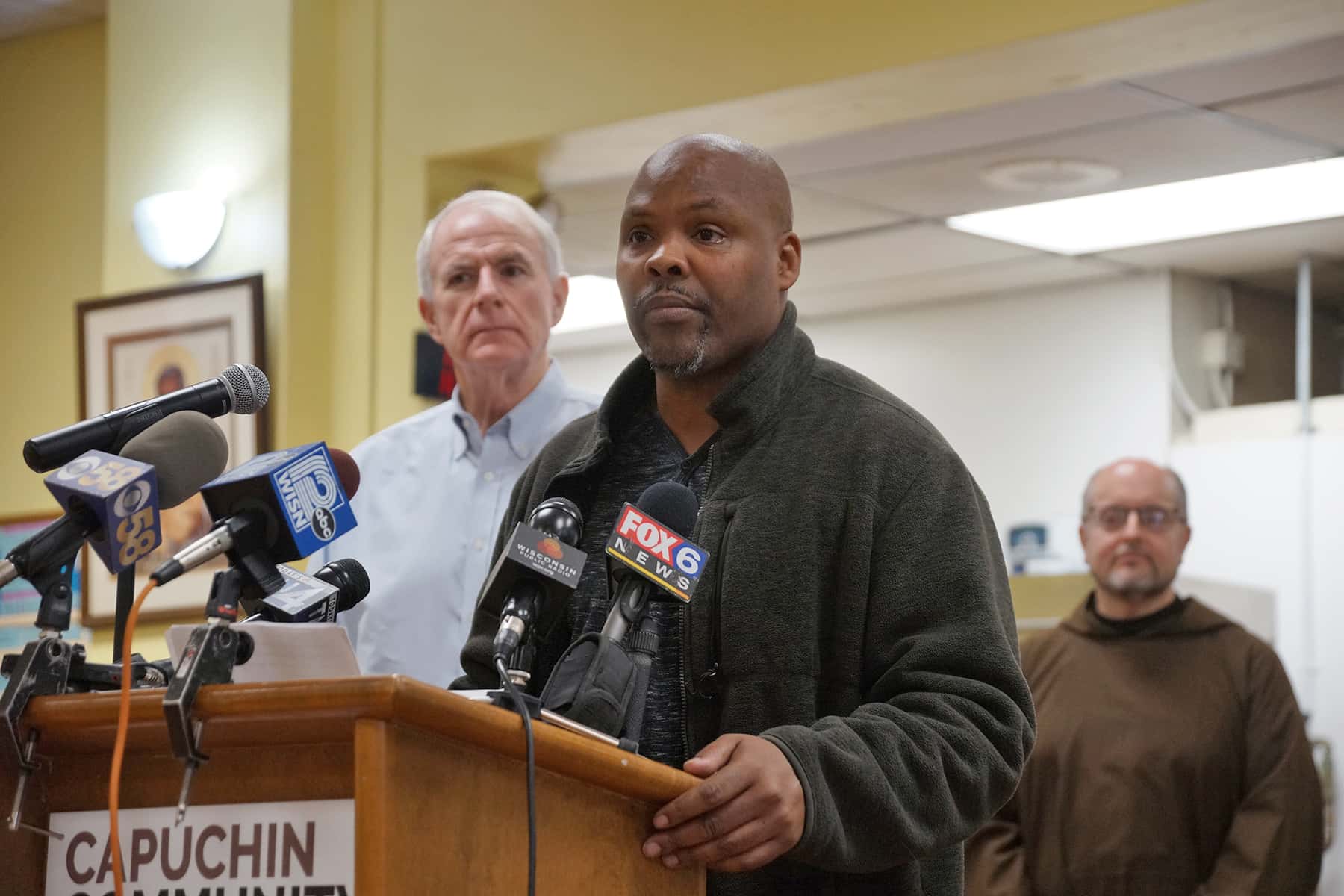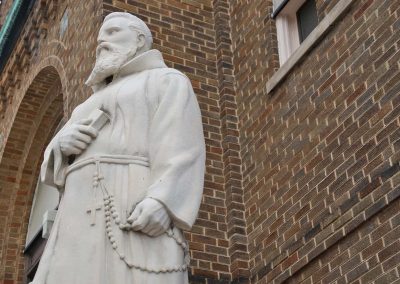
St. Benedict the Moor Parish hosted Mayor Tom Barrett and members of the Continuum of Care on December 2, to announce new developments in caring for the city’s homeless population during the winter by opening overnight and day warming rooms throughout Milwaukee.
On any given day there are more than 850 homeless men, women, and families in the Milwaukee area. Over 150 can be sleeping outside during Wisconsin’s frigid winter months. Every year the City partners with numerous organizations to make sure people have a place to go.
“This is the time of year where we want to talk about warming spaces, places where people can go to be safe and warm. And we chose St. Ben’s to talk about a significant development, because of the community care they have provided for so long,” said Mayor Barrett. “Anytime the temperature goes below 32 degrees, there is now a list of shelters that will be open for the homeless population to walk in and get warm.”
The change raises the temperature threshold for when to provide services. Previously, warming centers would not open until temperatures fell to below 20 degrees. Funding for the expanded program comes from a collection of corporate and civic sponsors like Rexnord, Harley-Davidson, United Way of Greater Milwaukee, the City of Milwaukee, and Milwaukee County.
There are several churches, community centers, and Milwaukee Public Library locations available around the city for residents without shelter to stay warm. Individuals and families are urged to call 211 to find a facility nearby, and pass the information on to anyone needing a warm place. The day shelter program augments many overnight shelter across Milwaukee County. The City reached out to St. Ben’s because of their capacity to serve all year, but particularly over the harsh winter season.
“Our meal hall will be converted to a sleeping space that can host up to 65 men, and as many as 20 women can stay in our gathering space on 930 W. State Street,” said Brother Robert Wotypka, Ministry Director, Capuchin Community Services. “People will not only be provided with a comfortable cot and a blanket, that were all donated last winter, but they’ll have hospitality in these spaces.”
St. Ben’s recently hired 10 additional part-time staff for its warming center, so that all of their guests would remain safe, feel comfortable, and have hospitality when they first come in. The overnight shelter program during the winter means that every night, after St. Ben’s serves the last meal in its food program, all the tables and chairs in the Meal Hall are put aside and replaced with cots for their guests to sleep on.
“We want the public to know that this program is providing people who have no other resources with a safe place to sleep, so that they won’t freeze to death. That is the core issue. Recently I interviewed a whole group of our guests here, who were staying at the Warming Center in November when we had that unusual cold spell. They were telling me that if we were not open, they would use another strategy to survive. But every one of them had a different strategy,” said Jim Van Hoven, Development Director, Capuchin Community Services. “Some creep into the lobbies of apartment buildings or sleep in an enclosed courtyard. Some of them ride the buses all night long. Some of them are trying to couch surf if they can find anybody. One woman told me how a man who she didn’t know allowed her to couch surf. She understood the risk she was taking, but she was going to die if she stayed outdoors. Thankfully he never bothered her at all, but that shows the risks people are willing to take, which could have ended very badly, as a way of staying alive in the cold weather.”
Jim Van Hoven said that St. Ben’s is always pleased when other organizations express interest in providing a warming shelter, because it shows that they want to give care for our brothers and sisters on the street. But he shares the experiences that St. Ben’s has learned over the years, to help charitable groups understand that managing a warming center is far more than just having space in a church or community center. There are a lot of supporting services that go along with giving shelter to make it a safe space. For example, if men and women will be hosted, then separate quarters and bathrooms must be provided for both. Keeping people and the building secure is also important, since some guests have mental health problem. It takes extra assets, plus time and staff to make sure no one is victimized, but also to care for people in a way that is genuinely respectful.
“If you know people, even if we are full, please still refer them,” said Kenny Howard, Assistant Director of St. Ben’s Community meal program. “Because one way or the other, whether they come to St. Ben’s or not, we will continue to find somewhere for them to be, so no one will be left out.”
© Photo
Lee Matz



